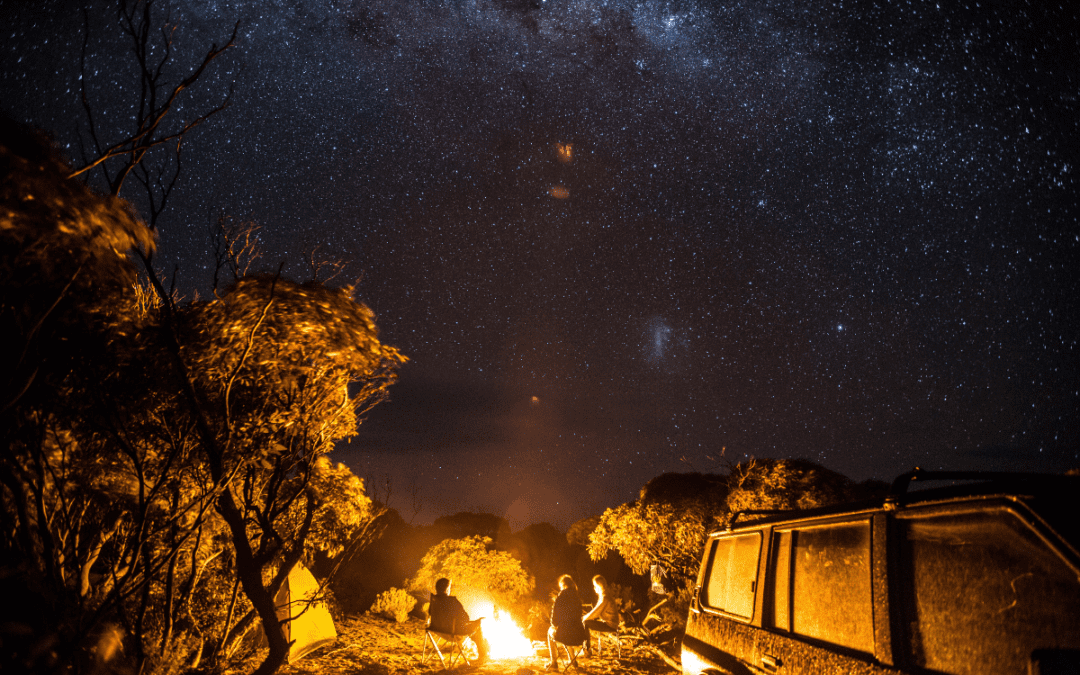When the sun sets and the sky darkens, a whole new world unfolds above us. Stargazing in the summer months offers a chance to witness celestial wonders and explore the vastness of the universe. In the Brazos Valley, with its wide-open spaces and clear skies, summer stargazing becomes an enchanting experience. Let’s delve into the summer sky and discover its secrets.
Best Times for Stargazing:
Summer nights in the Brazos Valley offer prime stargazing conditions, with clear skies and comfortable temperatures. The best time to observe the night sky is typically after sunset and before moonrise, when the sky is at its darkest. Check local weather forecasts and moon phases to plan your stargazing outings for optimal viewing conditions.
Celestial Events to Watch:
- Perseid Meteor Shower (July-August): The Perseids are one of the most anticipated meteor showers of the year, known for their bright meteors and high frequency. Peak activity occurs in mid-August, with up to 60 meteors per hour visible under ideal conditions. Find a dark location away from city lights and look towards the constellation Perseus to witness this celestial spectacle.
- Planetary Conjunctions: Throughout the summer, watch for planetary conjunctions, when two or more planets appear close together in the night sky. Look for Jupiter and Saturn forming a dazzling pair in the southwestern sky after sunset, creating a stunning celestial show.
- Summer Constellations: Explore the summer constellations visible in the Brazos Valley, including Cygnus the Swan, Aquila the Eagle, and Scorpius the Scorpion. Use a star map or stargazing app to identify these iconic star patterns and learn the stories behind them.
Top Stargazing Locations in the Brazos Valley:
- Lake Bryan: With its tranquil surroundings and minimal light pollution, Lake Bryan offers an ideal setting for stargazing. Spread out a blanket on the grassy shore or set up a telescope for an up-close view of the night sky.
- Brazos Bend State Park: Located just a short drive from the Brazos Valley, Brazos Bend State Park is renowned for its dark skies and excellent stargazing opportunities. Join a ranger-led stargazing program or explore the park’s observatory for an unforgettable celestial experience.
Stargazing Tips and Techniques:
- Use Red Light: Preserve your night vision by using a red flashlight or covering your flashlight with red cellophane. Red light doesn’t disrupt your eyes’ adaptation to darkness, allowing you to see fainter celestial objects more clearly.
- Bring Binoculars or a Telescope: Enhance your stargazing experience by bringing binoculars or a telescope to magnify distant stars, planets, and galaxies. Even a small pair of binoculars can reveal intricate details in the night sky.
- Learn the Night Sky: Familiarize yourself with the constellations, planets, and celestial events visible in the summer sky. Invest in a star map or download a stargazing app to help you navigate the heavens and identify celestial objects with ease.
Summer stargazing in the Brazos Valley offers a gateway to the wonders of the universe. Whether you’re admiring shooting stars during a meteor shower or exploring distant galaxies through a telescope, the night sky never fails to inspire awe and wonder. So grab your binoculars, head outside, and prepare to be amazed by the beauty of the summer sky in the Brazos Valley.
